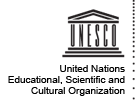The proposal plans to work with 120 representatives. In La Paz, Cochabamba and Santa Cruz, each workshop will involve:
1) 5 public authorities and social actors.
2) 5 mass media journalists and trade unions’ representatives.
3) 10 students and professors from public and private universities.
In each case, men will represent the 50% of beneficiaries and women the other 50%.
